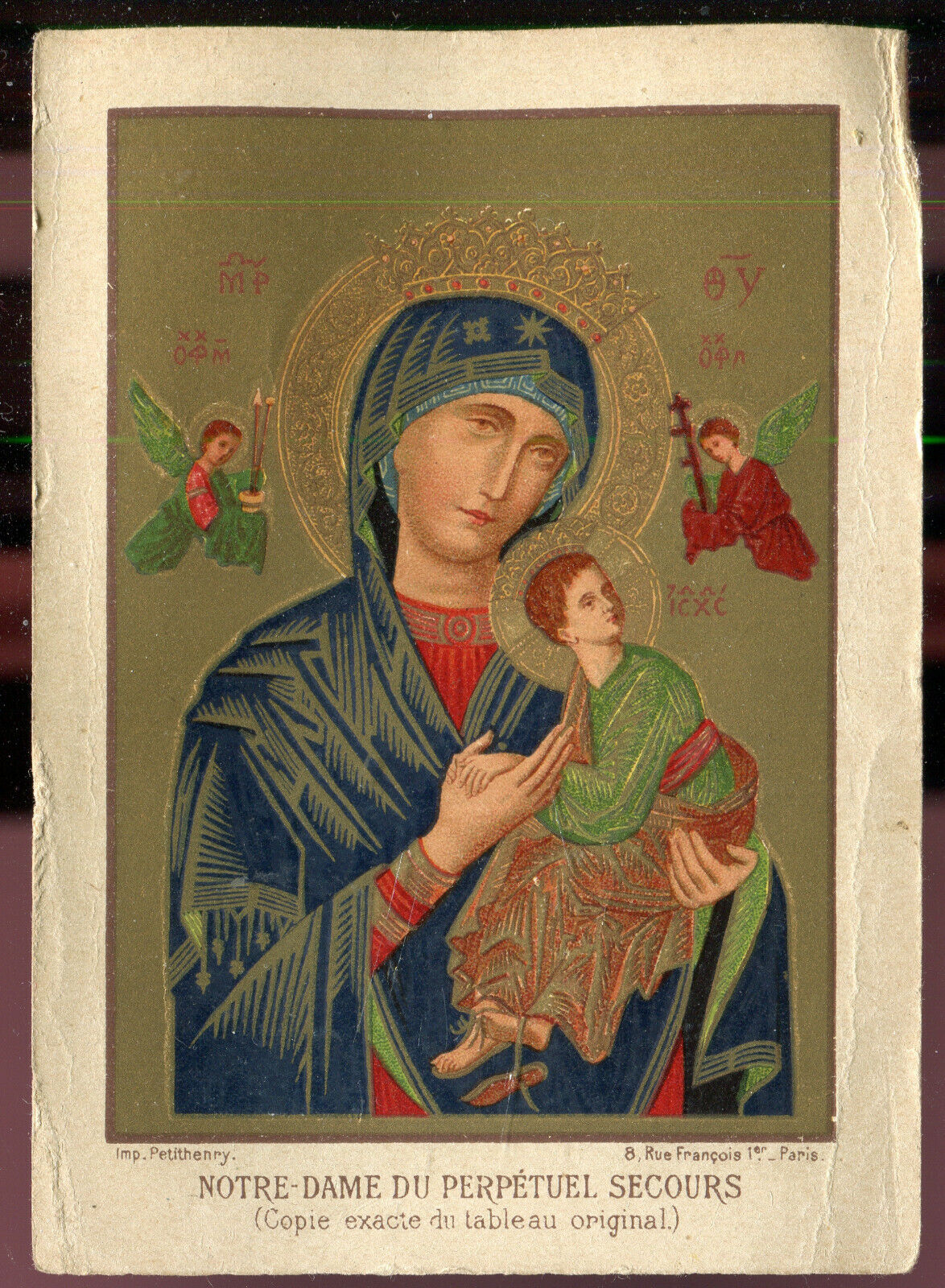-40%
Holy Card of the Ascension of Our Lord Jesus Plus a 1" Silver Oxidized Crucifix
$ 2.37
- Description
- Size Guide
Description
Laminated Holy Card of the Ascension of Our Lord Jesus Plus a 1" Silver Oxidized CrucifixThe Ascension of Jesus (anglicized from the Vulgate Latin: ascensio Iesu, lit. 'ascent of Jesus') is Christian teaching that Christ physically departed from Earth by rising into Heaven, in the presence of eleven of his apostles. According to the New Testament narrative, the Ascension occurred forty days after the resurrection. In the Christian tradition, reflected in the major Christian creeds and confessional statements, God exalted Jesus after his death, raising him from the dead and taking him to Heaven, where Jesus took his seat at the right hand of God.
In Christian art, the ascending Jesus is often shown blessing an earthly group below him, signifying the entire Church. The Feast of the Ascension is celebrated on the 40th day of Easter, always a Thursday; the Orthodox tradition has a different calendar up to a month later than in the Western tradition, and while the Anglican Communion continues to observe the feast, many Protestant churches have abandoned the observance.
In Islam, Jesus was neither crucified nor raised from the dead, and according to the Qur’an, he was rather saved by God and raised to Heaven.
Luke–Acts, a single work from the same anonymous author, provides the only original narrative account of the Ascension. Luke chapter 24 tells how Jesus leads the eleven disciples to Bethany, a village on the Mount of Olives, where he instructs them to remain in Jerusalem until the coming of the Holy Spirit: "And it came to pass, while he blessed them, he parted from them, and was carried up into heaven. And they worshipped him, and returned to Jerusalem with great joy." The corresponding scene in Matthew chapter 28 ends abruptly with the Great Commission, with no mention of an ascension, and there is a broad consensus among scholars that the brief Ascension account in Mark's longer ending (Mark 16:19) is a later addition to the original version of that gospel. The biblical narrative in Chapter 1 of the Acts of the Apostles takes place forty days after the Resurrection. Acts 1 describes a meal at which Jesus commands the disciples to await the coming of the Holy Spirit. Jesus is taken up from the disciples in their sight, a cloud hides him from view, and two men in white appear to tell them that he will return "in the same way you have seen him go into heaven." Luke and Acts appear to describe the same event, but present quite different chronologies, Luke placing it on the same day as the Resurrection and Acts forty days afterwards; various proposals have been put forward to resolve the contradiction, but the question remains open.
The Gospel of John has three references to ascension in Jesus' own words: "No one has ascended into heaven but he who descended from heaven, the son of man" (John 3:13); "What if you (the disciples) were to see the son of man ascending where he was before?" (John 6:62); and to Mary Magdalene after his Resurrection, "Do not hold me, for I have not yet ascended to my father..." (John 20:17). In the first and second Jesus is claiming to be the apocalyptic "one like a son of man" of Daniel 7; the last has mystified commentators – why should Mary be prohibited from touching the risen but not yet ascended Christ, while Thomas is later invited to do so?
Various epistles (Romans 8:34, Ephesians 1:19–20, Colossians 3:1, Philippians 2:9–11, 1 Timothy 3:16, and 1 Peter 3:21–22) also refer to an Ascension, seeming, like Luke–Acts and John, to equate it with the post-Resurrection "exaltation" of Jesus to the right hand of God.
In Christian theology, the death, Resurrection, and exaltation of Jesus are the most important events, and a foundation of the Christian faith. The early followers of Jesus believed that God had vindicated Jesus after his death, as reflected in the stories about his Resurrection, Ascension, and exaltation. The early followers of Jesus soon believed that Jesus was raised as first of the dead, taken into Heaven, and exalted, taking the seat at the right hand of God in Heaven, as stated in the Apostles' Creed: "He ascended into heaven, and is seated at the right hand of God the Father almighty." Psalms 110:1 played an essential role in this interpretation of Jesus' death and the Resurrection appearances: "The Lord said to my Lord, "Sit at my right hand until I make your enemies your footstool." It provided an interpretative frame for Jesus' followers to make sense of his death and the Resurrection appearances.











